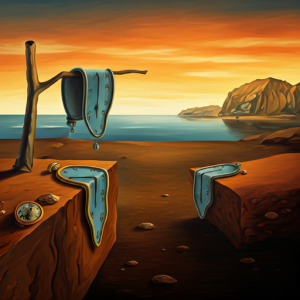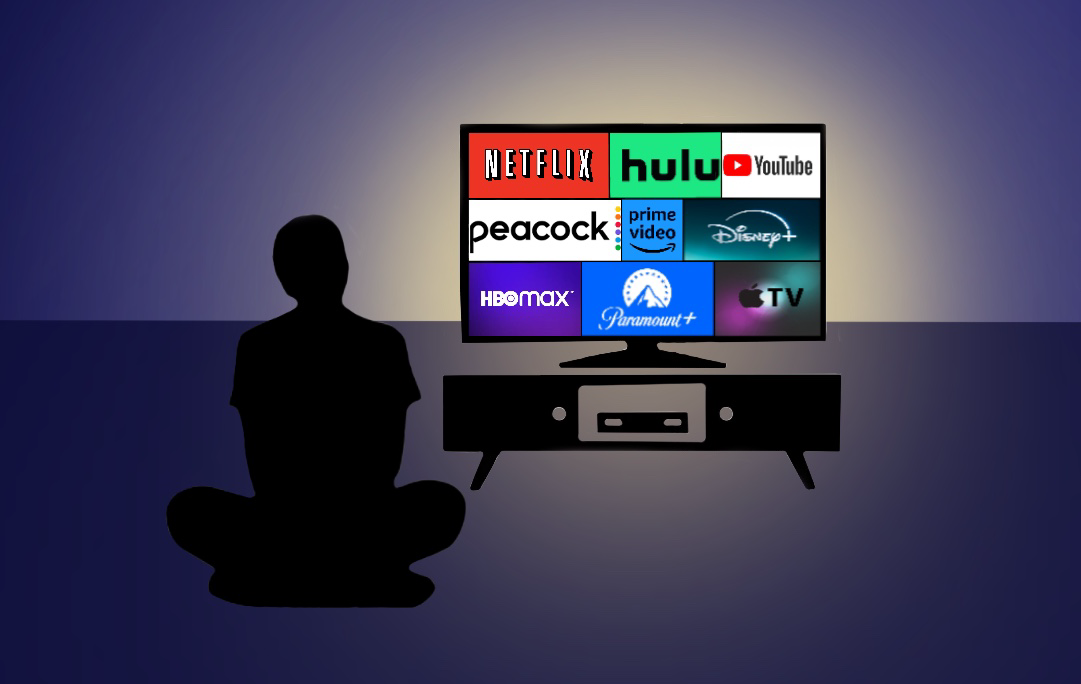
On September 19, 771,510 people excitedly clicked on the trailer for a new “Futurama” movie starring Ryan Reynolds and Brie Larson, only to find out that the movie does not exist—what they saw was really a combination of text-based, vocal and image-generating AI coming together to create that trailer.
Lately, anything seems possible with the use of generative AI. While a couple of years ago, the extent of AI was pre-programmed responses from Siri or Alexa, now AI is capable of copying the voices of celebrities and creating fully animated videos from a single command.
AI is implemented in a variety of ways online; from viewing the yearly recap on Spotify, looking something up on Google or even just scrolling through social media. Although it is labeled as “Artificial Intelligence,” in reality, current-generation AI simply mimics human creations based on what is available on the internet.
Large-name companies have taken notice of the mass appeal AI has, attempting to make use of its ability to easily create images as part of ad campaigns or, in the case of Adobe Stock, even its product.
In an ad campaign launched on Nov. 18, Coca-Cola aired “The Holiday Magic is coming,” where it showed various animals and trucks branded with the “Coca-Cola” logo in different cities. This sparked a lot of controversy about the ethics of such a large-name corporation using AI rather than hiring a film squad or animators.
This was not Coca-Cola’s first time facing controversy for using AI in advertisements. They had gotten a similar response with their campaign launched in May 2023 called “Masterpiece,” which was created with the help of Real Magic AI, Coca-Cola’s AI software. It shows a bottle of Coke getting passed through multiple paintings before making its way to a man sitting on a bench. Coca-Cola has not confirmed how much of the graphics were created with Real Magic.
AI in movies
The improvement of AI in writing is so vast it has even been used to write full screenplays; The Last Screenwriter, a movie written entirely by ChatGPT with only vague human-made prompts, was released on July 5, 2024 to mixed reviews. It is rated 5.3/10 on IMDb and currently unrated on Letterboxd (but the majority of reviews are ½ star due to the movie’s use of an AI generated script).
AI is also used heavily in filmmaking. Producers will use AI to fix the lighting and image quality of their products, along with enhancing and correcting the colors in a scene. AI has even been implemented into computer-generated imagery to improve visuals and enhance realism. AI can implement these features accurately and easily by pulling from its database to find something similar to the video and applying the same effects.
Many skills that filmmakers have learned—cutting people or objects out of a shot, applying filters or adjusting focus—can all be done from behind a phone screen thanks to AI technology, allowing aspiring filmmakers to shoot home videos in high resolutions all on their phones.
AI in writing
AI chatbots like Chatgpt, Google Gemini, Zendesk and Intercom have taken the internet by storm with their ability to write informational articles, essays and stories. As the technology has evolved, AI has become capable of generating more human-like texts and caused many to wonder if AI will replace human writing as it improves. As an aspiring author, junior Madison Smith wonders how AI could change writing.
“It’s getting stronger, and people are creating more specific things involving writing,” Smith said. “But I think creativity-wise, it won’t be an issue because art is a part of human nature. You won’t get as much life and emotion out of an AI bot.”
AI has made its debut into the publishing world with multiple books completely written by AI. Novels like “The Serious: A Proven Divorce” with 3.2/10 stars and “1 The Road” rated 4.3/10 stars are available for purchase on Amazon. See a list of books written by AI on Booksby.ai
Although AI can write stories surrounding a topic, it cannot create a story about a new topic. AI works by replicating and combining already invented ideas and stories into new ones.
Some people, like AP Language and Composition teacher Jamie Ling, fear that the continual use of AI on writing assignments in school will limit writing competency later in life and prevent students from discovering an appreciation for writing due to the convenience of AI writing tools.
“I completely respect those who feel like [AI] is a good thing. And I understand those who feel like [AI] is not a good thing. However, I worry,” Ling said. “Where I use a calculator for…the most simple math, now I rely on that. Math that I used to be able to do in my head, I can’t anymore, because I’m just out of practice. And so when writing is thinking, do we really want something else thinking for us? You don’t want someone else speaking for you. No one likes to be spoken for.”
AI in art
Many artists use digital tools for art because of its general accessibility and quality of life aspects. Due to the availability of digital art online on sites like Tumblr, Instagram, X and most other platforms that allow for users to post artwork, many AI programs have been able to recreate images and even generate new ones based on the data collected from these websites.
“I’ve seen [AI art] a lot because social media has so many different uses for it and then you look it up and it’s actually an AI, and you’re being tricked into thinking it isn’t.” sophomore Kaylin Rhodes said.
Rhodes has previously used AI in other classes to combine different animals in photoshop, which exposed her to the abilities of AI and worried her for the future of art.
“It can help if you’re using it as an idea, but if you’re … copying it, [it’s] kind of abusing the AI system,” Rhodes said.
As AI improves, its ability to make art that recreates the tendencies of humans improves too. AI has been able to copy specific genres of art, realistic brush strokes and lighting- even portraying fantasy and supernatural ideas in its images.
“[AI art generators don’t] fully understand a lot of things, like hands or eyeballs, [so] certain things will look off…unless it’s been specifically tailored. Otherwise, it’s pretty realistic,” junior Cailey Bolden said.
Although AI can create very realistic artworks, it is unable to create images with meaningful themes. For example, when Google Gemini was prompted to make a “surrealist painting,” it only gave images inspired by Salvador Dalí or an almost identical copy of Dalí ‘s artwork.


“If [AI art] was to replace [human-made art]. It’s just a computer, it doesn’t really have emotions. It doesn’t have that feeling or that personalized touch of what [the artist is] trying to explain,” Bolden said.
As AI continues to grow, it will advance in its ability to mimic human behavior, becoming more realistic in its ability to generate images, text and entertainment with each new generation. This has led many people to fear an AI take over of human fields. However, others remain confident that AI won’t replace human ingenuity.
“Human ideas are basically the starting point from everything, and that everything that AI [has created] was created by a human at one point,” Rhodes said.








